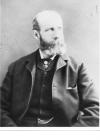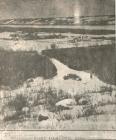1
Commissioner Irvine brought reinforcements to help Superintendent Crozier in the Battle of Duck Lake1890

2
Acheson Irvine was born in Quebec on December 7, 1837 and joined the militia in 1864. On March 17, 1885 Irvine received a telegraph from Superintendent Crozier that there was trouble and reinforcements were needed. He left Regina the next day with 100 men and covered 291miles in seven days.The Métis, having heard that 500 men were on their way to capture Riel, planned to intercept the police near Humboldt. The police arrived in Hoodoo just after the Métis had raided the mail station and heard rumors that the Métis were sending 400 men to attack him. To avoid this confrontation Irvine headed to Prince Albert before going to Fort Carlton. He also started his own rumor that he was going to attack Batoche.
3
Fort Carlton in 1885.1885
Fort Carlton is located on the east bank of the North Saskatchewan River, west of Duck Lake

4
Irvine arrived at Fort Carlton on March 26; just a few hours after the Battle of Duck Lake took place. The decision was made that with Fort Carlton so vulnerable to attack, the police and volunteers would retreat to the safety of Prince Albert. It was during this move that Fort Carlton burnt to the ground. Irvine remained in Prince Albert throughout the rest of the resistance but with out any orders to participate.In 1886 Irvine retired from the force. He was the warden of the Stony Mountain penitentiary from 1892 until shortly before his death on January 8, 1916. He had been awarded the Imperial Service Order in 1902.